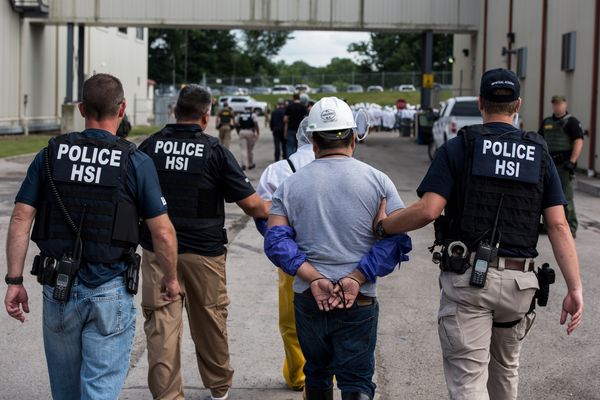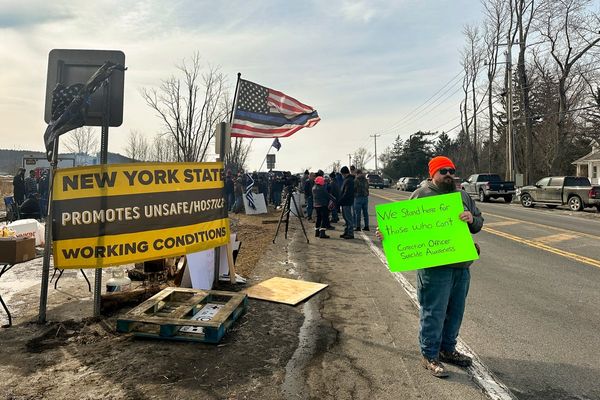First Nations people please be advised this article speaks of racially discriminating moments in history, including the distress and death of First Nations people.
A pillar of the Uluru Statement from the Heart is truth-telling. This is easy to say, but not easy to do. Truth-telling involves the practice of revealing things that are uncomfortable, long hidden or forgotten. Truth-telling practices across the country (and globally, such as in Canada) are bringing attention to histories and societal inequities that are often contentious and difficult to hear.
The Native Mounted Police is one such difficult story in Queensland’s truth-telling process.
The Native Mounted Police operated in Queensland for 80 years, starting in 1849. It consisted of small groups of between six and 15 Aboriginal troopers under the command of white officers. The troopers were typically recruited from areas far from where they were sent to serve.
Detachments of troopers were regularly sent out on patrol, covering large areas along the frontier of the colony in pursuit of Indigenous people who were considered to be “problematic”. Their main job was to protect civilian settlers, the lands they had taken up, and their livelihoods - by whatever means necessary.
While on patrol, the Native Mounted Police are known to have engaged in violence against Aboriginal people, including killings of men, women and children, kidnappings, rape, and the forcible removal of children.
Truth-telling will mean coming to terms with this violence. Their actions radically altered the makeup of First Nations groups, diminished their populations, and changed where and how survivors could live.
With respect to this history, renowned Badtjala artist and scholar Dr Fiona Foley has said
I believe this country carries deep wounds from the trauma of these frontier wars. We carry it inside our souls whether we are conscious of them or not.
What we’ve found in our research
For seven years, we have been reconstructing the activities of the Native Mounted Police in order to help Queenslanders begin to understand this history.
In our research, we combed through archaeological work on Native Mounted Police camps and artefacts, examined historical documents (newspapers, colonial government documents, private diaries, hospital records and maps) from public archives and libraries, and conducted oral histories with a range of people, including descendants of Native Mounted Police officers and troopers, and descendants of massacre survivors.
We have organised all of our findings – nearly 20,000 documents in total – in an online database to shed light on the lives of the 450 officers and over 1,000 Aboriginal troopers who made up the Native Mounted Police, and the violence they administered.
Some people question why Aboriginal boys and men would enlist in a force whose job was to hunt down and kill other Aboriginal people. As we discuss at length in a research article, the reasons are varied and many. Some were directly or indirectly coerced through threats of violence or reduced prison sentences, but many seemingly “volunteered”. Many recruits may have had few, if any, other viable options - in essence, they were faced with a “choiceless choice”.
Like other native policing forces used by the British in Africa and India, the Queensland Native Mounted Police also deliberately exploited the fact that Indigenous people from one part of the country often regarded those from another as strangers, if not enemies.
The extent of frontier conflict
Other researchers have mapped massacre events in Australia in which more than six people were killed. Not all frontier conflict resulted in the deaths of large numbers of people, however. Large massacres were typically preceded by a series of smaller events and followed by others afterwards. These often included attacks on livestock or property rather than people, or the killings of individual people on both sides.
Our aim was to reconstruct as comprehensively as possible the scale and nature of all frontier conflict events, including violence that took place before the Native Mounted Police were officially established. All of this conflict would have set the scene for Indigenous people in their subsequent interactions with settler-colonists.
We divided conflict into four categories: attacks on stock or property, attacks on non-Indigenous people, attacks on Indigenous people and attacks on the Native Mounted Police themselves.
All together, we mapped more than 2,500 of these conflict events across colonial Queensland from 1623 until 1911. Our findings show violence occurred everywhere, but was especially common along the east coast and on Cape York Peninsula.
Violence commenced in Queensland in 1623, with the voyage of the Dutch vessel Pera, captained by Janszoon Carstensz. After settler colonists arrived in the early 1800s, we found violent incidents taking place in every decade from the 1820s onwards, peaking in 1866.
Because historical documents are biased in their focus on violence towards settlers, the most common form of conflict recorded was the killing of livestock, such as sheep, cattle and horses.
Pastoralists, agriculturalists, farmers and selectors had often invested their life savings in buying livestock and taking up land. They could little afford to lose their animals to Aboriginal spears. When they did, they often called in the Native Mounted Police, whose presence began a series of retaliatory events.
Potentially higher death rates from conflict
Of the 165 Native Mount Police camps we have identified in our research, 150 have relatively secure beginning and end dates, with an average duration of 13 years per camp. This suggests that, generally, it took just over a decade to curb Aboriginal resistance in any given region.
In some areas, though, it took much longer. In the Cook Pastoral District (which covers most of Cape York Peninsula), for example, a staggering 54 Native Mounted Police camps operated from 1868 until 1929.
When the areal extent of different historic pastoral districts is taken into account, however, some had an even greater density of Native Mounted Police camps than Cook. Even though the Wide Bay District in southeast Queensland had only six camps between 1850 and 1864, its small size meant the Native Mounted Police presence here was quite intense.
Our data also suggests the death rates of frontier Aboriginal peoples was considerably higher than previous estimates.
Historians Raymond Evans and Robert Ørsted-Jensen have estimated some 41,000 Aboriginal people could have been killed at the hands of the Native Mounted Police between 1859 and 1897. Their estimate was based on reasonable and minimal assumptions drawn from historical documents and an average seven-year lifespan per camp.
Extending the duration of a camp to 13 years, in line with our newly identified data, increases the total deaths to potentially over 60,000.
Ripples in Australia today
The government policies that allowed this decimation of Indigenous lives continue to have very real implications in Australian society today.
Australia’s colonial history has been built on policies designed to secure and maintain possession of Indigenous lands. Historically, colonial powers employed forces like the Native Mounted Police to enact widespread violence on the Indigenous people who stood in the way of this.
We can see the repercussions of historical actions to displace Aboriginal communities in processes such as native title claims. These processes force Aboriginal people to prove generational connections to land from which they were, at best, marginalised, and at worst, excluded.
Many Aboriginal groups can trace their families back to only a handful of ancestors because so many people were killed outright, died from starvation and disease, or were removed through measures such as the Stolen Generations.
The resounding defeat of the recent Voice to Parliament referendum is another case in point. It reveals a lack of understanding of the historical nature of violence against Indigenous people, the racist foundations of settler Australia, and how these continue to impact communities today.
Lynley Wallis receives funding from the Australia Research Council. She is affiliated with the Australian Association of Consulting Archaeologists Inc. and Wallis Heritage Consulting.
Heather Burke receives funding from the Australian Research Council.
Troy Meston receives unrelated funding from Education QLD, NIAA, UNESCO, Griffith University.
This article was originally published on The Conversation. Read the original article.







